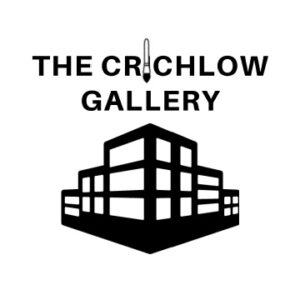Whether you are an emerging or established artist, getting into a new exhibition is an exciting advancement of your creative practice.
Being selected is a validation of your work, especially when a gallerist, curator, or other highly regarded art professional has affirmed your talent. However, the opportunity to show your art in a public space is more than that. It is also an opportunity to level up the business goals of your practice.
Through my experience advising artists on their business development for nearly a decade, I have developed a list of tasks that I have seen lead to a successful show. Some of these items will not apply to every type of exhibition – after all, exhibiting at a commercial gallery, a nonprofit, or an art fair are all quite different. However, each item is worth considering and may help you think of other innovative tactics to improve your business.
To get started, there are several decisions to make, items to update, and elements to prepare before, during, and after your show.
Once you have the date of your opening, start mapping out when you will tackle these items and attach each to a deadline.
Sometimes, narrowing down choices can be labor intensive. If a task below is taking too long, then put parameters on how much time you will toil with it or enlist a competent colleague to help you make the final call.
Here are 25 tasks for a successful show that will attract new clients, increase your visibility, and enhance your overall experience in the art world.
☐ Set your goals for the art exhibition
Having a financial goal is always great, but you can set other kinds of benchmarks as well. You could aim to sell a certain number of pieces from a specific series, to increase the number of people in your database, or to establish a more solid connection with one of the jurors by inviting them for a studio visit. Here is a handy S.M.A.R.T. goals worksheet for artists to set your goals in action.
☐ Refine a show title and description
If you are collaborating on the direction of an exhibition, rather than simply delivering work to a show programmed by others, make sure it has a catchy title and a short description that can easily give the audience and media an idea of what to expect.
☐ Bring a variety of work (yet still cohesive body)
Diversifying your offerings can help generate sales. Be sure to provide various sizes and price points, so people have options.
☐ Create a social media promotion plan
Don’t neglect social media promotion. Creating a content calendar to implement before, during, and after your exhibition will make it easier to post during busy installation and opening reception days. Instagram, TikTok, Facebook and LinkedIn all favor visual content like art, and each will attract viable collectors to your business.
☐ Consider payment options at the show
Hopefully, someone else is collecting payment for your work. If not, sign up for a Venmo account or learn another phone-based payment platform (and practice using it before a collector gives you their credit card for the first time). Also, consider offering an installment plan in case an interested party finds your prices to be too steep.
☐ Review your target market
Hopefully, you track your sales so you have a sense of who buys your work. If not, this is an excellent time to assess the demographic information of your collectors to see if there are any patterns based on age, race, gender, or economic status. That way, if a person is interested in your work, you might feel more confident knowing that they are part of your target market, or you may make an extra effort when speaking with them.
☐ Organize activation events
In addition to an opening night, explore other ways to attract patrons to see your exhibition. For example, if environmental issues inspire your art, then organize a talk by a local educator to discuss the impact of climate change in your city. You can invite the guest speaker’s network to enhance your exposure and have an entirely new program to promote.
☐ Invite VIPs to private tours
People love to feel special. Be sure to review your database to see who may appreciate a private tour of your show. Certainly, some of your collectors would respond favorably to such a personal invitation.
☐ Send out a press release
Hopefully, the host of your exhibition is distributing a press release. If not, encourage them to do so and ask how you can be helpful.
☐ Wear a professional outfit
Dress to impress. Don’t change your style but do think through what you want to wear at your opening beforehand.
☐ Block your calendar
Schedule some time to decompress and get organized from your big night by blocking the day after the opening on your calendar. Use the time to think through ways to cultivate some of the conversations, contacts, and sales into additional opportunities.
☐ Send out a postcard
Snail mail is still a thing. Since it’s rare to get a paper invitation these days, create a simple postcard to send to your network with an image of you, your work, and the details of the exhibition and related events.
☐ Email a newsletter
Use Mailchimp, Constant Contact, or Flodesk to create a newsletter that includes details about your show. Consider adding an RSVP link, so you get a sense of who is coming.
☐ Print out wall labels
Review the wall labels with the host of your show. Make sure they will be printed in an appropriate size with the title, dimensions, media, and price for each artwork. You can also create your own labels on Artwork Archive in just a few clicks.
☐ Generate price sheets
Some people need a lot of time to think about purchasing artwork. Providing them with a price sheet to keep after a show can be helpful. Be sure that it includes a thumbnail image of each piece and the wall label details. And don’t forget to provide your contact information!
☐ Review your website
Review your website to ensure it reflects your current body of work. Also, look at the CV and Artist Statement on your site to see if they need to be refreshed.
☐ Share your artist statement
If permissible in the venue, frame your Artist Statement and have it readily available on a table or hanging near your work. Sharing this summary of your practice can provide people with a deeper understanding of what inspires you, your process, and the media itself.
☐ Remember business cards
This old school tool is still important. Bring a stack – one side could have an image of your artwork, and the other should state your contact information in a legible font.
☐ Bring a guest book
Capturing guests’ contact information at your opening is critical. If permitted, have a friend standing at the door with a guest book with one column for names and the other for email addresses.
☐ Consider a sweet treat
If you are showing your work at a street festival or an artist-driven fair like Superfine, then have a little sweet treat at your booth. Sugar certainly will lure a few additional folks.
☐ Attract more clients with a prize drawing
Similar to the candy tactic above, if your venue draws a large crowd, consider having a receptacle for people to add their business cards to participate in a drawing for a small or inexpensive artwork. This allows you to capture contact information for more potential collectors.
☐ Update your database
Remember that day that you blocked on your calendar after the opening? Use some time to update your database with all of your new contacts.
☐ Write thank you notes
A personalized thank you card still goes a long way. Handwrite a heartfelt message to those that purchased your artwork and share how much it means to you that they are supporting your career.
☐ Send personalized follow-up emails to attendees
Be sure to send a personalized email within the week following your opening to thank those that attended. If certain folks seemed interested in your work but did not purchase a piece yet then offer them an in-person or Zoom studio tour so they can learn more about you and your art.
☐ Update inventory
Tracking where your work has shown, who purchased it, the price point of sale, and other details about each piece, is essential to creating a robust business side to your art practice. Artwork Archive is the best platform available to help you do so. Sign up here to get your art practice more organized.
This content was originally published here.

![[Checklist] 25 Tasks for a Successful Art Exhibition | Artwork Archive](https://thecreativnetwork.com/wp-content/uploads/2022/09/checklist-25-tasks-for-a-successful-art-exhibition-artwork-archive.jpg)

